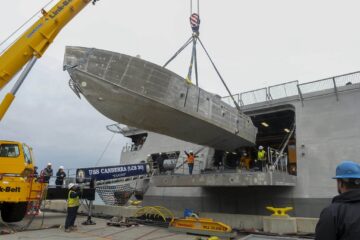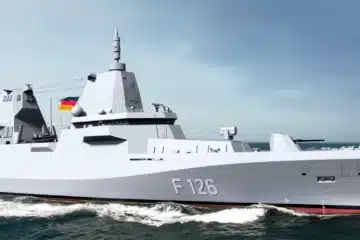Leveraging core technology pulled through from the Avni airborne intelligence, surveillance and reconnaissance (ISR) suite previously developed by Thales Optronic Missiles Electronics in Glasgow for counter-insurgency and anti-poaching operations, the system – given the name SWEEPIR 30 – is being designed for the detection of drifting and floating mines. A prototype system is already in test.

Although Thales has already made significant investments in the development of maritime autonomous systems and sensors for MCM, it currently lacks an airborne sensor payload in its product portfolio. To fill this gap, the company is looking to repurpose technology from the Avni ISR product line to develop a wide field-of-view system detect floating and near-surface mine threats.
A SWEEPIR 30 testbed – configured with an array of ten downward-looking uncooled long waveband infrared cameras – is being used to support initial experimentation. Early trials have been flown using a commercial Bell LongRanger helicopter.
Thales is striving to minimise the SWEEPIR 30 form factor, both for the sensor cluster and the backbone processing unit. Early discussions with UAV house Schiebel have given confidence that the system’s space and weight would enable integration with Schiebel’s widely sold Camcopter S-100 UAV.
According to Thales, the final airborne MCM product solution is likely to be multi-spectral, with a combination of electro-optical, infrared and LIDAR sensors. LIDAR would offer a capability to detect mines just below the sea surface.
Thales is continuing self-funded development work, with an aspiration to have a ‘minimum viable product’ ready for market by the end of 2024.






